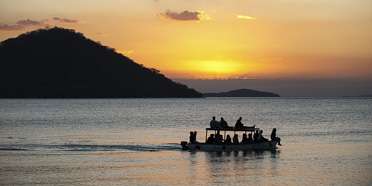

The best wildlife-viewing months are July to October, from the middle to the end of the Dry season. At this time, all water in the bush has dried up and animals gather around permanent water sources. Keep in mind, however, that October is extremely hot. The exception is Nyika Plateau, which gets very cold in the dry winter months. In Nyika, a more pleasant time is from November to May.
Wildlife viewing is at its best due to less vegetation and animals gathering around rivers and waterholes
There is virtually no rain, skies are clear, and there are fewer mosquitoes
Although it is high season, most of the parks won’t be crowded
October can get very hot
Morning game drives will be cold; pack warm clothing
The scenery is green and lush
It is low season, meaning lower rates
You can see newborn animals
Best time for bird watching, with migratory birds present
Rains are mostly short showers late in the afternoon
Most camps stay open throughout the year
Wildlife is harder to see as vegetation is thick and there's an abundance of water
Some dirt roads become impassable; a high-clearance 4x4 vehicle is recommended for all parks and reserves
Malaria is a bigger concern than in the Dry season
Liwonde National Park and Majete Wildlife Reserve offer great wildlife viewing throughout the year, but the best months are from July to October, during the middle and end of the Dry season. (Generally, the dry winter months from May onward bring nicer travel conditions in Malawi.) Most other wildlife parks in the country follow the same pattern. However, Nyika National Park has a different pattern. Wildlife viewing here is pretty consistent throughout the year, but the most pleasant time to visit is during the summer months of November to May. This is because the dry winter months can be bitterly cold due to the high altitude.
$7,181 to $8,817 pp (USD)
$1,859 to $2,025 pp (USD)
$4,500 pp (USD)